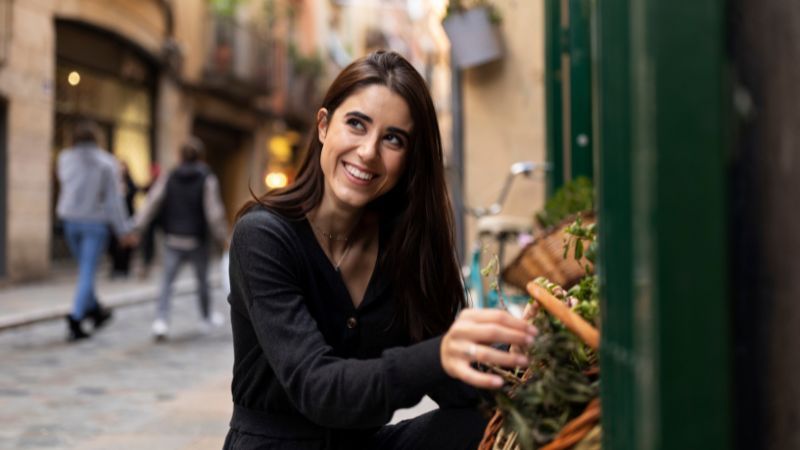In Italy, saying hello isn't just a formality—it's a big deal. It's like the first brushstroke on a canvas, setting the tone for the whole interaction. Italians take their greetings seriously, seeing them as the first step in building connections and making people feel welcome.
And at the heart of these hellos is the simple question, "How are you?" It's more than just a question; it's an invitation to connect.
So, in this post, we're going to dive into the different ways you can ask "How are you?" in Italian, from the basic to the quirky.

Basic Phrases to Say How Are You in Italian
When it comes to asking someone how they're doing in Italian, two phrases stand out as the go-to options: "Come stai?" and "Come va?". Let's break them down:
1. Come stai? - How are you?
Pronunciation: Koh-meh sty
This phrase is the equivalent of the English "How are you?" It's casual and commonly used among friends, family, and acquaintances. Whether you're catching up with a friend over coffee or running into someone on the street, "Come stai?" is a friendly and informal way to check in on someone's well-being.
2. Come va? - How's it going?
Pronunciation: Koh-meh vah
This phrase is similar in meaning to "Come stai?", but it's even more casual and colloquial. You might hear it among friends catching up or in casual conversations with acquaintances. "Come va?" is versatile and can be used in various contexts to inquire about someone's general state or how things are going in their life.

Informal Expressions
In addition to the basic phrases for asking "how are you" in the Italian language, there are informal expressions that add a touch of familiarity and warmth to the conversation. Let's explore two such expressions:
3. Come va la vita? - How's life going?
Pronunciation: Koh-meh vah lah vee-tah
This expression goes beyond just asking about someone's immediate state and delves into a broader inquiry about their overall well-being and experiences. It's a friendly and informal way to catch up with someone, showing genuine interest in their life beyond the surface level.
Whether you're chatting with a friend over lunch or reconnecting with a family member over the phone, "Come va la vita?" invites the other person to share their thoughts and experiences in a relaxed and open manner.
4. Tutto bene? - Everything okay?
Pronunciation: Too-toh beh-neh
This simple phrase is commonly used in informal settings to check on someone's general well-being or to ensure that everything is going smoothly in their life. It's a casual and friendly expression that can be used as a quick greeting or as a way to show concern for someone's state of mind.
Whether you're meeting up with a colleague for coffee or catching up with a neighbor in the hallway, "Tutto bene?" is a versatile phrase that conveys care and interest in the other person's welfare without delving too deeply into personal matters.
Formal Expressions
In certain situations, especially when addressing someone older or in a professional setting, it's important to use more formal language. Here are two formal expressions for asking "how are you" in Italian:
5. Come sta? - How are you?
Pronunciation: Koh-meh stah
This phrase translates to "How are you?" and is used in formal contexts or when addressing someone with whom you want to show respect. It's the polite form of asking "how are you" and is appropriate when speaking to elders, strangers, or in professional environments.
Whether you're meeting with a client, speaking to your boss, or conversing with someone you've just met, "Come sta?" demonstrates courtesy and consideration for the other person's well-being.
6. Come sta lei? - How are you?
Pronunciation: Koh-meh stah lay
This phrase means "How are you?" but includes the formal pronoun "lei," which is the polite form of addressing someone in Italian. It's used in formal or respectful situations, such as when speaking to elders, authority figures, or individuals you want to show deference towards.
"Come sta lei?" is appropriate in professional settings, formal events, or when addressing someone of higher social status. It reflects a level of politeness and respect in your interaction with the other person.

Regional Variations
Italy's diverse regions are not only known for their stunning landscapes and rich cuisine but also for their unique dialects and expressions. When it comes to asking "How are you?" in Italian, you'll encounter various regional variations across the country. Here are some examples:
Northern Italy
7. Lombardy: Comme va?
This is a variation of "Come va?" used in Lombardy. The pronunciation and meaning are similar, but the dialectal spelling reflects the regional pronunciation.
8. Piedmont: Coma te gh'and?
This phrase, used in Piedmontese dialect, translates to "How are you doing?" The use of "gh" and "and" reflects the local pronunciation.
Central Italy
9. Tuscany: Come stai?
While "Come stai?" is commonly used throughout Italy, it may have a slightly different intonation or pronunciation in Tuscany, reflecting the regional accent.
10. Marche: Com' stè?
In the Marche region, this shortened form of "Come stai?" is prevalent. The contraction and regional accent characterize the local dialect.
Southern Italy
Campania (Naples): Comme staje?
The Neapolitan dialect often features variations of standard Italian phrases. "Comme staje?" is a common way to ask "How are you?" in Naples.
11. Sicily: Comu stai?
In Sicilian dialect, "Comu stai?" is used to ask "How are you?" The use of "comu" instead of "come" reflects the Sicilian pronunciation.
These regional variations showcase the linguistic diversity found within Italy, with each region offering its own unique twist on common phrases like "How are you?". Learning and understanding these regional expressions not only enriches your language skills but also deepens your appreciation for Italy's cultural tapestry.
Final Words
So, there you have it—a bunch of ways to ask "How are you?" in Italian! From the casual "Come stai?" to the more formal "Come sta lei?", we've covered it all. Now, it's time to put these phrases into action. Don't be shy! Practice them with friends, family, or even strangers you meet on your next Italian adventure.
So, go ahead, give it a try! Whether you're chatting with a barista in Rome or a shop owner in Florence, a simple "Come stai?" could lead to a memorable interaction. After all, in Italy, greetings aren't just about being polite—they're about making people feel welcome and valued. And isn't that what it's all about?
Learn Italian through TV Shows with Lingopie!
Incorporate Lingopie into your daily language practice routine to immerse yourself in authentic Italian content, including movies, TV shows, and documentaries. Lingopie offers interactive subtitles that allow you to follow along with the dialogue while simultaneously learning new vocabulary and phrases.
By watching Italian films or shows that feature poetry or discussions about literature, you can deepen your understanding of Italian culture and language in a fun and engaging way. You can enhance your listening comprehension, vocabulary acquisition, and overall fluency in Italian with Lingopie!
Download Lingopie from the App Store or Play Store now and get a FREE 7-day trial!





![How To Learn Japanese With Ghibli Studios [3+ Best Films]](/blog/content/images/size/w1200/2023/03/Top-shows-to-learn-Spanish-on-Netflix--18-.png)
![How Many Italian-Speaking Countries Are Out There? [2025 Data]](/blog/content/images/size/w300/2025/06/Italian-speaking-countries.jpg)


